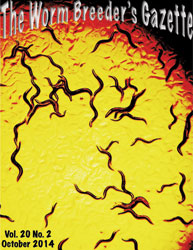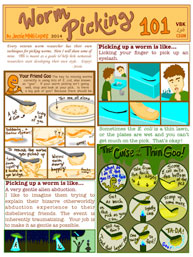Conversations at the 2011 IWM prompted me to share the following. A recent attempt at microinjection resulted in only a few F1 transgenics (< 0.2 F1s per injected animal) and no transmitting lines. The major cause was traced to the use of RNase in a newly-opened Qiaprep Spin Miniprep Kit. I have been routinely omitting addition of RNase to the P1 suspension buffer in the kit due to a previous failure to recover F1s if RNase was used with modified alkaline lysis and ethanol precipitation (Birnboim and Doly, 1979), even with organic extraction. Using new plasmid DNA prepared with P1 lacking RNase, many F1s and transmitting lines were recovered, though the efficiency, ~7 F1s per injected animal, was still significantly lower than the ~25-29 F1s per injected animal reported by Mello et al. (1991) at similar DNA concentrations (180 ng/μL; see Table 1). The optional PB rinse step in the Qiagen kit did not seem to improve the efficiency. Instead, it was found that Ethanol Precipitation (EP) of the Qiagen-prepared DNA increased recovery of transformed F1s to an efficiency close to that of Mello et al. (1991) (Table 1).
The precipitation step significantly improved recovery of F1s and transmitting lines with routine injections and, especially, recovery of insertions with the Mos-based Single Copy Insertion method (MosSCI; Frökjær-Jensen et al., 2008). The very similar but less expensive Fermentas GeneJET Plasmid Miniprep kit (#K0503; omit RNase, add EP) was also found to work just as well. It is acknowledged that others in the community may not be experiencing any issues with their miniprep DNA and that their experience might be completely different from what is reported here, for a variety of reasons. However, if some are experiencing low worm transformation efficiencies with spin column-purified DNA, the omission of RNase and addition of Ethanol Precipitation might be worth trying.
Table 1: Recovery of F1s following microinjection.
| Preparation method1 |
# injected2 |
# transformed F1s3 |
# F1s per inj. animal |
| Qiagen (no RNase), no EP4 |
15 |
99 |
6.6 |
| Qiagen (no RNase), + EP5 |
16 |
356 |
22.3 |
(1) EP of DNA made with P1+RNase was not tried, as previously it was found that DNA made following alkaline lysis, RNase treatment, organic extraction and EP did not result in DNA preps that gave good worm transformations.
(2) EG4322 [ttTi5605 II; unc-119(ed3) III] animals were used for both sets of experiments. Injected animals were pooled together in groups, so it is not known if all injected animals gave transformed progeny.
(3) Scored by rescue of the unc-119 locomotory defect. The proportion of F1s making transmitting lines was not scored.
(4) Plasmids pDP#MM016B [unc-119(+)] and pMM824 [unc-119::mCherry] were transformed into E. coli XL2-Blue. 4-mL overnights were grown in LB+carbenicillin (10 μg/mL). DNA was prepared using the Qiaprep Spin Miniprep Kit without RNase in the P1 buffer, and eluted in 50uL of EB (10 mM Tris pH 8.3). Agarose gels of DNA prepared without RNase suggest very little RNA (if any) survives the final elution step. DNA concentration was measured with a Nanodrop spectrophotometer and the injection mix made in EB to a final concentration of 90 ng/μL per plasmid in 10 μL.
(5) Ethanol Precipitation was performed by adjusting the volume of the original plasmid preparations to 200 μL with ddH2O, adding 20 μL of 3M sodium acetate (pH 4.8) and 550 μL of 95% ethanol, placing at -20°C for 15’, pelleting at high speed for 10’, rinsing the pellet in 80% ethanol, and suspending in EB. Concentrations were adjusted to 500 ng/μL and a second injection mix was made in EB at the same DNA concentrations.
References
Birnboim HC and Doly J. (1979). A rapid alkaline extraction procedure for screening recombinant plasmid DNA. Nucleic Acids Res. 7, 1513-1523. 
Frökjær-Jensen C, Davis MW, Hopkins CE, Newman BJ, Thummel JM, Olesen SP, Grunnet M, and Jorgensen EM. (2008). Single-copy insertion of transgenes in Caenorhabditis elegans. Nat. Genet., 40, 1375-1383. 
Mello CC, Kramer JM, Stinchcomb D, and Ambros V. (1991). Efficient gene transfer in C. elegans: extrachromosomal maintenance and integration of transforming sequences. EMBO J. 10, 3959-3570. 




